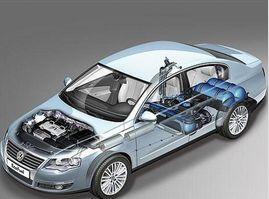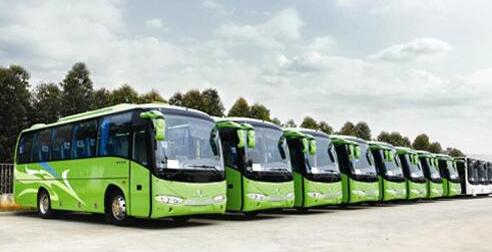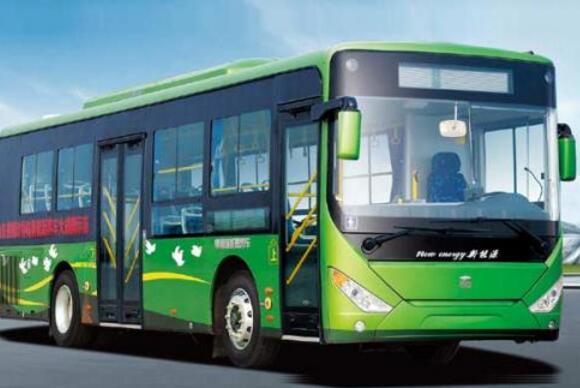1) In 2017, the output of new energy vehicles was close to 820,000 units, an increase of 58.7% year-on-year, of which:
In 2017, a total of 560,000 new energy passenger vehicles were sold, of which 450,000 were pure electric passenger cars and 110,000 were plug-in hybrid passenger cars. The pure electric vehicle in this field is 4.5:1.1 compared with the plug-in vehicle.
2 In 2017, the total sales of new energy special vehicles totaled 152,000 units, a year-on-year increase of 279.39%. In the market segments of new energy special vehicles in 2017, a total of 148,000 urban distribution vehicles were sold. Municipal sanitation trucks and other trucks accounted for the same proportion, and sales were above 1800. This field is all pure electric.
3 bus (basically pure electric bus and commuter car) is about 100,000. Buses and commuter cars in this area are all purely electric.
(Note: According to the data released by the China Association of Automobile Manufacturers on January 11, the production and sales volume of new energy vehicles in China reached 794,000 and 777,000 respectively in 2017, an increase of 53.8% and 53.4% ​​respectively. The statistical caliber is different, the reported data Differences.)
2) In terms of the number of power battery supporting enterprises, the number of enterprises in 2017 was 83. Power batteries reached 37.4 billion watt-hours a year, up 33% year-on-year.
According to the data released by the China Association of Automobile Manufacturers on January 11, the total supporting capacity of new energy vehicles in 2017 reached 37.06 billion WH, of which the passenger vehicle supporting capacity was 13.98 billion Wh, accounting for 37.72%; the passenger vehicle supporting capacity was 14.57 billion Wh. The proportion is 39.31%; the number of special vehicles is 8.51 billion Wh, accounting for 22.95%. The Lithium Ion Battery supporting capacity is 36.9 billion Wh, accounting for 99.56% of the matching amount. Among them, ternary: 16.56 billion WH, accounting for 44.87% of lithium-ion battery matching; lithium iron phosphate: 18.07 billion Wh, accounting for 48.96%; lithium manganate: 1.54 billion Wh, accounting for 4.17%; lithium titanate: 7.4 Billion Wh, accounting for 2%. In 2017, China once again became the world's largest market for power battery applications.
The new energy vehicle scale represents the comprehensive level of the industrial chain, with an annual production capacity of 820,000 vehicles, an increase of 58.7%. It is the world's first level. The power battery reached 37.4 billion watt-hours, up 33% year-on-year, representing China's power battery industry. This key technology can support China's pure electric vehicle technology to advance.

1. Adjustment in policy and access management
First, the impact of the subsidy policy is declining. The pressure on enterprises to reduce costs is high, and the product structure needs to be adjusted. Second, the new access management of new energy vehicles will be implemented in January 2017, and the subsidy technology threshold will be improved. Enterprises need time to optimize and improve products. The impact on the first half of the year is relatively large, especially in January; the third is the subsidy requirement and clearing mechanism of 30,000 kilometers for non-personal users, which has caused heavy financial pressure on new energy auto companies and affects the enthusiasm of enterprises.
2, multiple management affects product time to market
The listing of new energy vehicles requires product announcements, free car purchase tax catalogues, subsidized recommended catalogues, local catalogs and other four procedures, resulting in a long product launch cycle, counting power battery testing takes 10 months, while traditional cars are 2 month.
3. The policy expectations are not clear, leading to market wait and see
The new energy vehicle-free vehicle purchase tax policy expires in December 2017. It is not clear whether it is clear or not; the new energy bus operation subsidy policy expires in 2019, and whether the policy continues to have a greater impact on the enthusiasm of the bus company knows the new car.
4. Local market access and subsidy policies lag behind
The local government implements access to new energy vehicles in the form of catalogues, and the requirements of localities are inconsistent. The high cost and long cycle of enterprises' requirements for different localities and the implementation of tilting policies on product access of local enterprises restrict market development and lead to unfairness. Competition; in accordance with the adjustment requirements of the central subsidy policy, many places have not yet introduced new energy vehicle subsidy adjustment policies, leading enterprises and consumers to wait and see.
5, is the charging infrastructure
According to the requirements of the state, the charging facility operation is undergoing upgrading and upgrading of the charging interface by standard switching, and the construction speed of new piles is slowing down. Due to the layout and structural problems, the utilization rate of charging facilities is low, and most operators have difficulty in profitability. The adjustment of heavy operations; the landing of various policy measures, such as the land for charging stations, the allocation of piles for public parking lots, the nuclear reduction table, and the compensation and construction policies for charging pile construction and operation.
6, is the market lack of stamina
At present, new energy passenger cars are mainly concentrated in several major cities, and private users in other cities are not willing to purchase. Lack of business policies such as taxis and timeshares.

1. The financial subsidies have retreated, which has largely forced customers to enter the long-term wait-and-see state. “Subsidy reduction has a very direct impact on the purchasing power of customers, resulting in a significant 'shrinking' of demand for new energy buses, which is easy to see from the sales data in the first half of the year,†said Li Yusheng, Minister of Culture and Culture of Zhongtong Bus.
2, 30,000 km policy has become the "heart disease" of the new energy bus industry. The reporter learned that in order to effectively curb fraudulent behavior and promote the overall improvement of the technical performance of new energy vehicles, the Ministry of Industry and Information Technology issued the Notice on Adjusting the Financial Subsidy Policy for the Promotion and Application of New Energy Vehicles on December 29 last year, requiring non-private users to purchase New energy vehicles need to accumulate more than 30,000 kilometers to receive state subsidies. The policy was implemented on January 1 this year.
“The introduction of the 30,000 km policy by the state will help promote the healthy development of the industry. However, this has brought unprecedented pressure and challenges to the bus manufacturers. Due to the wide range of our customer base, it is not limited to the bus group, passenger transport companies and other fields. There are also companies that buy new energy buses for leasing, commuter shuttles and short-distance connections. For new energy buses or coaches, it is not difficult to travel 30,000 kilometers cumulatively; but for those who buy new energy buses for commuting For buses and short-distance vehicles, it is very difficult to achieve a mileage of 30,000 kilometers a year, and some even take more than two years to reach 30,000 kilometers. This means that the bus manufacturers cannot obtain the country in time. Subsidies." Li Yusheng believes that the 30,000-kilometer policy will lead to difficulties in capital turnover for new energy bus manufacturers in a one-size-fits-all situation.
Qin Xujun, general manager of the Nanjing Jinlong Light Vehicle Passenger Vehicle Marketing Center, also believes that after the introduction of the 30,000-kilometer policy, the operating costs of the company will be greatly increased. The bus companies can only respond by increasing the price of the car, but this will curb the market demand.
3. New policies and new regulations are introduced intensively, which is not conducive to the development of enterprises. "The introduction of new policies by the state is conducive to the development of the new energy automobile industry. However, if new policies are introduced too frequently and no easing time is reserved for enterprises, it is easy to cause waste of resources and normal operation of bus companies. Bringing difficulties," said an analyst of a bus company that did not want to be named.
4. Still staying in the technical aspects of core components such as batteries. The relevant person in charge of Ankai Bus Sales Company told the first commercial vehicle network: "In recent years, although the domestic battery technology is constantly improving, but through actual verification, it still exposes many problems. For example, the battery does not charge at high temperature. Electricity, and even cause the vehicle to self-ignite, seriously affects the normal operation of the vehicle, and there are great safety hazards. These technical problems are urgently needed to further improve and improve the manufacturers of the parts and components of the passenger car manufacturers."
5. Some insiders believe that in recent years, bus companies have been exhausted by policy-driven efforts, putting most of their energy into the new energy field, ignoring the pursuit of quality improvement of passenger car products. "Cars are still industrial products in the end, quality and quality are the foundation. Many companies are over-pursuing new energy and even busy financing in the capital market, resulting in insufficient research and development, technology and talent investment in the quality of passenger cars. Sustained development is worrying."

1. The development trend of new energy buses in the next five years is a steady and continuous increase. Once the subsidy policy for 2016-2020 is made, its stabilization time will remain basically over five years. In these five years, companies can safely follow the documentation requirements to carry out the work related to new energy vehicles, and no longer worry about changes in subsidy policies. There will be different voices in the development of new energy vehicles in the society. It is only a discussion and will not trigger changes in the state subsidy policy.
2. Pure electric online charging buses or new dual-source trolley buses will become the mainstream models of large-scale new energy buses. "Double-source trolleybus" is a part of pure electric vehicle invented by China in the early 1980s. It is the prototype of today's pure electric bus. This invention originated from the manufacturer of bus passenger cars. The car battery charging is borrowed by the contact network for charging, and the vehicle can be taken off for a short distance. Since people are not aware of the value of this model, the “dual-source trolleybus†has not been upgraded very well. In 2011, after the efforts of the Yangtze River Automobile Company, the work of upgrading the “Double-Source Trackless Bus†to the “Pure Electric Online Charge Bus†was completed. At present, the continuous electric mileage of pure electric online charging buses developed by Yangzijiang Automobile Co., Ltd. has been more than 150 kilometers, and the mass energy consumption per unit (Ekg) is 0.3. Compared with other manufacturers, it is in an absolute leading position, and many manufacturers simply emphasize that the longer the charging mileage is, the longer the better, resulting in a larger energy consumption per unit load.
The successful development of the pure electric online charging bus developed by Yangzijiang Automobile Co., Ltd. has made great contributions to the inclusion of the new energy vehicle series in today's “Double-source trolleybusâ€. It can be predicted that after the dual-source trolleybuses are included in the new energy vehicle series, 26 cities in the country that retain (or have had) trolleybuses will rapidly popularize pure electric online charging buses or new dual-source trolley buses.
3. The concept of online charging of new energy buses is not limited to the single form of contact network charging. The pure electric bus of 10 meters or more is still based on the contact network charging mode within 3 years. However, under the guidance of the 6-8 meter pure electric bus online charging, there will be multiple charging forms for providing 380V AC power or 600V DC power supply on the operation line (online), such as: at the bus terminal (end) station The ground charging pile, the external power socket of the car charger, and the portable charger for charging with the vehicle. However, with the advancement of charging technology, the concept of online charging on the operating line (online) will be more and more important.
4. The high-power centralized charging station mode will be abandoned by the bus company. The reason is that the new dual-source trolleybus is already a new energy bus, and it is inevitable that the bus company must have its own power station. The management here belongs to the bus company, and the power supply company only needs to provide the power of the power station. The current situation is that bus companies have their own gas stations and gas stations. The objective requirement of the bus company's charging station is to build according to the distribution of bus lines. The charging station service object established by the power supply company cannot be a bus company or a social vehicle. The frequency of the bus lines of the dual-source trolley buses is quite frequent. The charging facilities of pure electric buses must be distributed and must be moved frequently. High-power centralized charging stations cannot do this. The mobile power supply house, which is specially designed for power supply of dual-source trolley buses, has been industrialized domestically. It is in line with the requirements of public transport companies to build distributed charging facilities, with low cost, short cycle and convenient movement.

5G Integrated Lithium Ion Battery
5G Integrated Battery,51.2V Battery System,Integrated Lithium Ion Battery,Backup Lithium Ion Battery
Wolong Electric Group Zhejiang Dengta Power Source Co.,Ltd , https://www.wldtbattery.com